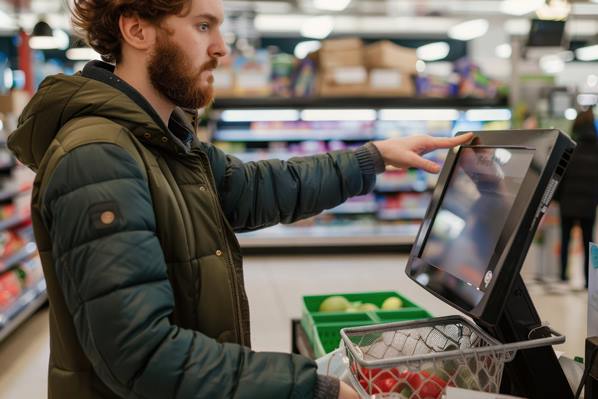
Customers in the town of Chippenham, UK are upset over the increased number of self-service checkouts at a local Sainsbury’s supermarket, leading to long queues.
Some residents are considering shopping elsewhere due to the “awful” experience caused by the self-scan tills and concerns are being raised about the situation worsening during the upcoming holiday season.
While some customers find the self-service checkouts convenient and time-saving, others prefer the personal interaction at manned tills. Sainsbury’s defends the change, stating they aim to meet customer demand and offer support for those who prefer serviced checkouts.
Self-checkouts are a hot topic right now, and they offer a range of advantages and disadvantages. Let’s look at some of the pros and cons.
Positives:
- Convenience: Self-checkouts allow customers to scan and pay for their items at their own pace, which can be faster during busy times.
- Reduced Wait Times: With multiple self-checkout stations, customers may experience shorter lines compared to traditional checkout lanes.
- Privacy: Some shoppers prefer self-checkouts for the privacy they provide, as they can avoid interactions with cashiers.
- Efficiency: Self-checkouts can streamline the checkout process, especially for customers with fewer items.
- Cost Savings for Stores: Supermarkets can save on labor costs by reducing the number of cashiers needed.
- Flexible Payment Options: Many self-checkout systems accept various forms of payment, including credit/debit cards, mobile payments, and cash.
Negatives:
- Technical Issues: Self-checkout machines can malfunction or experience technical problems, leading to frustration for customers.
- Increased Theft: Some studies suggest that self-checkouts can lead to higher rates of shoplifting, as monitoring is more challenging.
- Lack of Personal Interaction: Some customers prefer the personal touch of interacting with a cashier, which can enhance the shopping experience.
- Complexity for Some Users: Not all customers are comfortable using technology, which can make self-checkouts intimidating for some, such as the elderly or those unfamiliar with the system.
- Limited Assistance: If customers encounter problems, help may not be readily available, leading to delays.
- Impersonal Experience: The shopping experience may feel less welcoming or personal, which can affect customer satisfaction.
Overall, self-checkouts can enhance efficiency and convenience for many shoppers, but they may also present challenges that can affect the overall shopping experience.
Where do you think of self-checkouts? Love them or loathe them? Let us know in the comments below!




